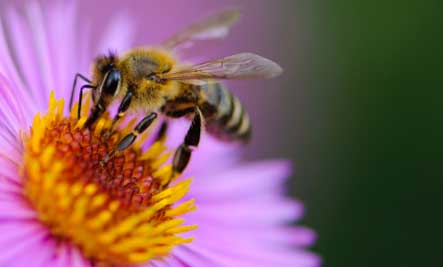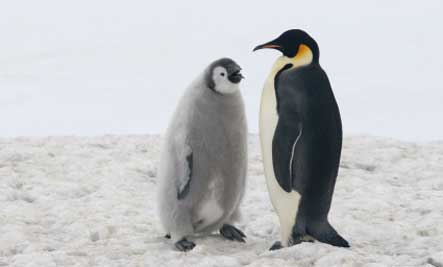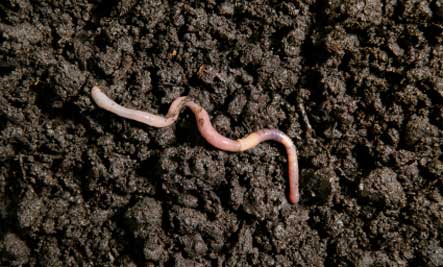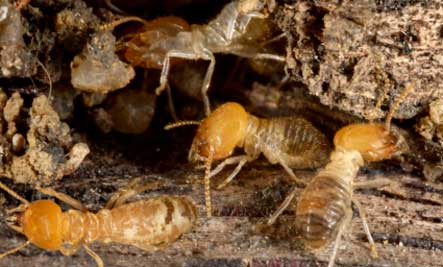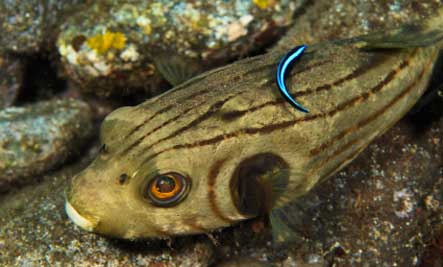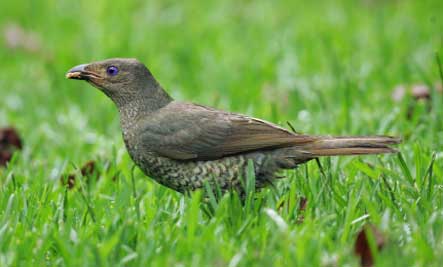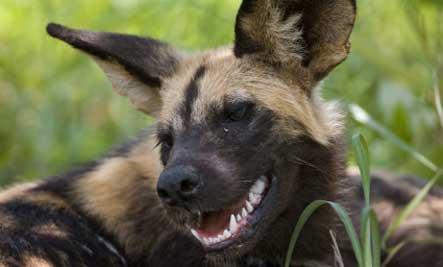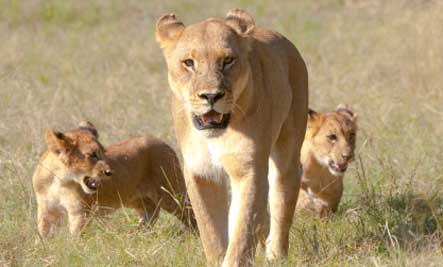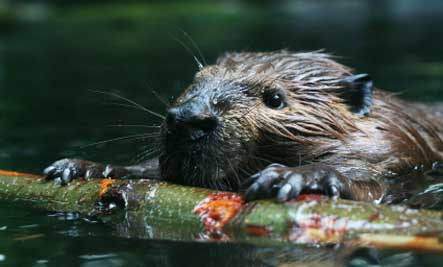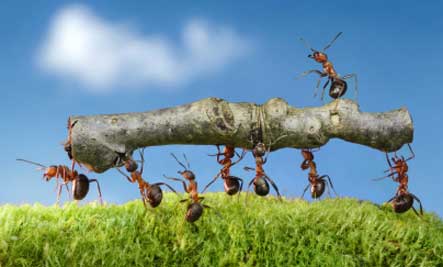This may surprise you, but ants have more of a purpose than putting a damper on your picnic. These industrious animals have workloads that may put your own to shame.
In fact, many creatures work long days and nights just to survive in the wild, and if you think your 9-to-5 job is rough, a lot of these animals perform tasks that are very similar to jobs people do — though they may have completely different reasons for doing them and unique tools for getting the jobs done.
Why do some birds, for example, work as interior decorators? And how do beavers construct giant lodges by chewing on tree bark? Find out what a regular workday is like in the animal kingdom for 10 of the most dedicated workers around.
1. Corporate Employees: Honey Bees
These little dark brown- and yellow-striped insects are responsible for a multi-million dollar business. According to the University of Rhode Island’s horticulture program, between honey, beeswax and cross-pollination of other agricultural crops, honeybees produce more than US$100 million dollars in profits each year in the U.S. alone. Much like any large company, there are a variety of roles that help the business inside the beehive run smoothly.
The CEO is the queen bee, and her main responsibility is to reproduce more bees so the hive continuously has new workers. Field bees are responsible for leaving the hive to collect necessary supplies, like nectar, which they pass on to the worker bees at the hive. The worker bees are all female and are responsible for creating the honey. They regurgitate the nectar over and over to remove most of the water, which produces honey. Worker bees also provide heating and air-conditioning for the hive, warming it in the winter by waving their wings and cooling it by sprinkling water on the honeycomb. There are no vacations or happy hours at the end of a long day — like the rest of the animals in our countdown, their business runs around the clock with no overtime pay.
2. The Parents: Emperor Penguins
People all over the world have been enamored with the plight of emperor penguins ever since the documentary film “March of the Penguins” debuted in 2005. The film told the story of the epic voyage emperor penguins make every year in April, all for the purpose of breeding their young. The male emperor penguin could be considered Father of the Year when you consider the lengths this Antarctic animal goes to for his hatchling.
After traveling an average of 80 kilometres from the ocean to a hatching ground, penguins mate and the mother produces an egg that she passes to the father. While the mother returns to the sea for food, the father sits on the egg for around 64 days until it hatches. Once the baby penguin emerges, the father keeps it warm and even feeds it nutrients secreted from his own esophagus until the mother returns.
Upon the mother’s return, parental duties are exchanged so the male penguin can return to sea for his first meal in over four months. By December, which is summer in Antarctica, the pack ice begins to melt, revealing the ocean underneath. This happens just in time for the young emperor penguins, which are finally able to swim and collect food on their own.
3. The Farmers: Earthworms
The earthworm may seem like a simple animal, but Charles Darwin spent decades studying the slimy crawlers and once said they played a vital part in our world’s history. Darwin is not the only person to recognize their value. Most people who are into composting already know the benefit of earthworms. They are nature’s farmers, plowing the soil as they tunnel through it.
The United States Department of Agriculture (USDA) estimates that it takes earthworms 10 to 20 years on average to turn over the top 15 centimetres of soil. The tunnels they leave behind also serve a purpose by circulating air and water into the soil, keeping it fresh and nutrient-rich. Earthworm droppings, called castings, are also essential, as they are rich in nitrogen, calcium and other nutrients that are indispensable for a healthy ecosystem. According to the USDA, 0.8 square metres of soil can contain up to 300 earthworms, and while not all soil contains earthworms, their presence is usually a good sign of healthy dirt.
4. Demolition Experts: Termites
When most people hear termites, they immediately think of destruction, but these tiny wood eaters actually serve a purpose beyond being a homeowner’s worst nightmare. Termites appear to operate within a social system very similar to that of ants.
The worker termites are white, or often appear transparent, and are first on the scene when a new wood source is found. They are responsible for locating food resources, excavating the wood, and caring for young termites. Soldier termites are physically mature and can be identified by their yellow to brown heads and black mouths. Their main responsibility is to protect the colony from enemies like ants or termites from competing colonies. The only winged termites in a colony are called alates, or swarmers, and they are in charge of starting new colonies.
While billions of dollars are spent every year trying to control termite infestations, these little demolishers are an important part of forests’ ecosystems, since they break down cellulose in wood for consumption by plants and animals.
5. The Beauticians: Cleaner Wrasse
The many species of fish living in coral reefs have the cleaner wrasse to thank for living parasite-free. Similar to an aesthetician who scrubs the dead skin cells off a client’s feet, the cleaner wrasse offers a similar scrub-down to its fellow aquatic creatures. These tiny fish average only 5 to 7 centimetres in length, but they spend all day, every day working to rid other reef fish of unwanted parasites and dead scales. They really get into the nitty-gritty of their job, cleaning fins, tails and even mouths. Surprisingly, they even clean much larger fish that might normally be considered predators. But the cleaner wrasse’s job is deemed so important that, according to the Indianapolis Zoo, large fish are willing to forgo a snack in order to get a good cleaning.
Of course, it is not completely selfless work for the cleaner wrasse, since all of those parasites are like a buffet for them. Reef fish get clean and the cleaners get a full belly, making this work arrangement a win-win.
6. Interior Decorators: Bowerbirds
The male bowerbird has an eye for decorating that may make even the most talented interior designer look like an amateur. This hopeful bachelor doesn’t just build a nest for his potential mate; he lavishly adorns it, too — all in hopes of catching a female bowerbird’s attention. When designing, he arranges pebbles, shells, flowers and other objects to stage the nest. And according to recent studies published in the journal Current Biology, he even takes it one step further.
Researcher John Endler explains that male bowerbirds actually stage the nest so that, when viewed from a specific spot, the arrangement makes objects — including the bowerbird — look bigger than they really are. Since competition is steep, with several male bowerbirds vying for the same females, this feathered friend can use all the help he can get.
7. The Butchers: African Wild Dogs
Long considered the butcher of the African desert, this dog takes the meat no one else wants. In fact, this species plays an essential role in the ecosystem by removing sick or injured animals, which helps keep balance and improves prey species.
The hunters of the pack work together like a relay team when targeting prey. When they have locked in on their target, some dogs will begin running close to it, with other dogs in the pack running behind. Once the lead dogs begin to tire, those from the back of the pack take over. Thanks to teamwork, prey rarely escapes a chase. According to the San Diego Zoo, African wild dogs hunt twice daily and are successful 70 to 90 percent of the time, unlike lions, which have a much lower success rate at 30 to 40 percent. They also seem to believe it takes a village to raise their young, since the entire pack — which usually consists of 6 to 20 members — takes part in raising the pups.
8. The Hunters: Female Lions
Female lions are the working mothers of the animal kingdom. These big cats not only bring dinner to the table, they also nurture their young and often care for the cubs of other lionesses, too.
While male lions are considered the kings of prides and protect their families from predators, the females do the majority of the hunting. Without manes to tip off potential prey, female lions are able to stalk their victims silently within 30 metres before they attack. These divas of the African desert hunt mostly at night and prove there is something to the phrase “girl power” by working together to stalk and kill their prey.
9. The Builders: Beavers
The saying “busy as a beaver” might take on an entirely new meaning when you consider how active beavers truly are. Considered nature’s engineers, these long-toothed mammals are very adept at and diligent about building dams in rivers or streams to create ponds suitable for their lodging needs.
Beginning in late summer and into the fall, beavers begin preparing their homes for winter. They gather wood by using their tails to prop them up while they chip away at tree trunks with their teeth. Once a tree has broken off from the trunk, the beaver breaks it down into smaller pieces that are more manageable to carry back to the location they plan to build on. Laying the sticks into the mud, they stack layers of wood until the dam is built. But a beaver’s job is not done once the dam is complete. It also works to dig out its living quarters, called a lodge, and stockpiles wood to eat during the long winter months.
Although beaver dams are a headache for property owners that do not want running streams blocked, the beaver does provide a useful service to other creatures like ducks and moose, which use the ponds as a water source.
10. Factory Workers: Ants
If you have ever had an ant farm, then you know an ant colony runs like a factory with well-defined roles and responsibilities. The queen ant’s only role is to reproduce, making her the sole producer of all ants born in a colony. A male ant’s only job is to mate with the queen, and unlike the queen, who lives for 15 to 20 years, males die shortly after mating.
All of the other ants in the colony have specific jobs to keep it running smoothly. Worker ants are responsible for feeding and caring for the larvae produced by the queen, as well as keeping the colony clean, digging new tunnels and a variety of other tasks.
Foraging ants are responsible for finding food and bringing their finds back to the colony. In addition to these roles, some ants act as security guards, scouting locations for the foragers and guarding the colony. While ants might appear to be nature’s nuisance, these tiny bugs eat dead insects and their underground tunnels help aerate soil, making them a vital part of any ecosystem.
Selected and adapted from Animal Planet

